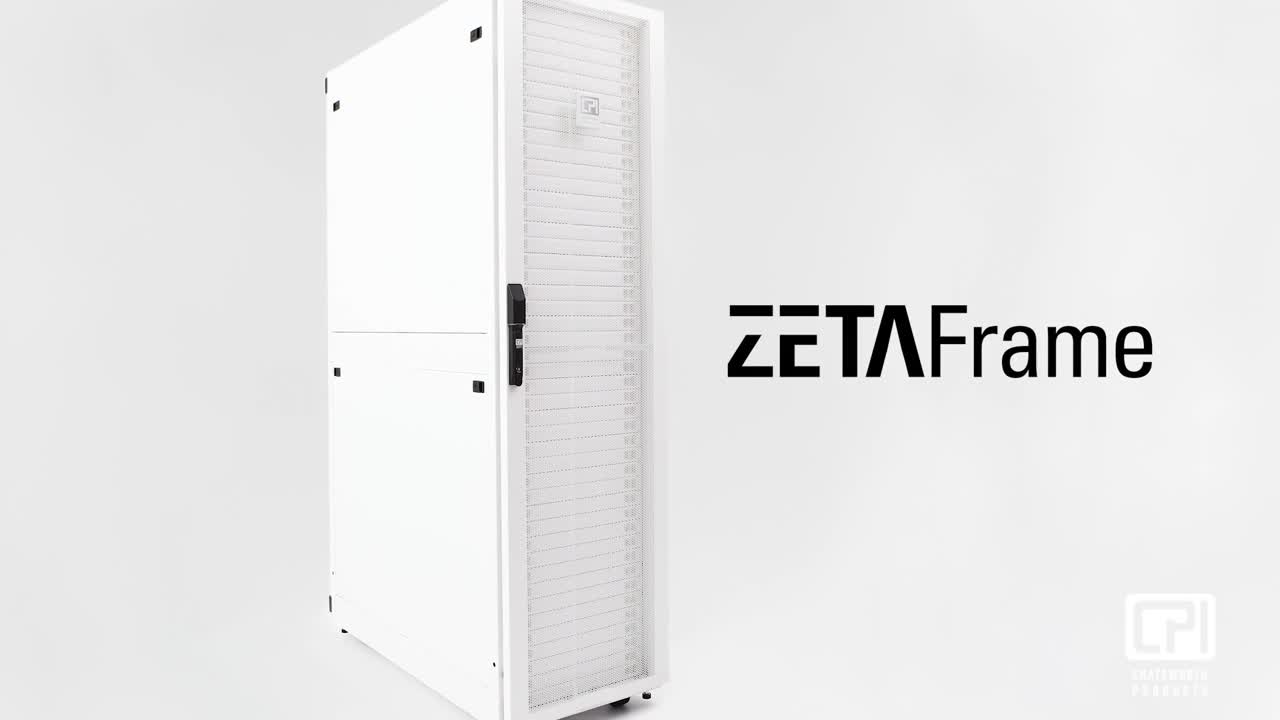Make Smarter, Faster Decisions and Optimize Data Center Management with an Ecosystem Approach
March 11, 2021
The world is changing. Think “always on,” with a rising global demand for connectivity anytime, anyplace. And as new technologies and services emerge thanks to the Internet of Things (IoT), 5G wireless and edge computing, those tasked with managing and implementing the networks that deliver this always on connectivity, are quickly learning to embrace a new approach to managing data center assets and white space remotely. Thankfully, change doesn’t have to be difficult if done right.
Chatsworth Products (CPI) believes it starts with taking a close look at your ICT infrastructure, specifically your cabinets/racks and the subsystems within. Think of it as the cabinet ecosystem.
What is a Cabinet Ecosystem?
CPI defines the cabinet ecosystem as a holistic approach to increasing operational efficiency, minimizing complexity, and simplifying white space management. Taking it a step further, a cabinet ecosystem, at its core, is the integration of hardware and software into the data center cabinet, which makes up the subsystems in the cabinet. When this infrastructure—that is, the hardware (the cabinet and anything inside or connected to the cabinet) and any software that specifically supports or enhances this hardware’s functionality—are from the same manufacturer, the ecosystem thrives, allowing you to make more informed decisions, more quickly and in turn, the ability to achieve total data center optimization.
Beyond the Cabinet Itself, What are the Primary Elements of a Cabinet Ecosystem?
Power Management
Power distribution, monitoring and control, as well as power management inside the cabinet, are all critical to ensuring the availability and uptime of your IT applications, as well minimizing the overall energy footprint of the data center.
Environmental Monitoring
One of the most common causes of downtime is hardware failure resulting from exceeded temperature or humidity levels within the cabinet. The ability to monitor these environmental conditions, and identify and address any issues before they result in downtime, is a key component in any data center management strategy.
Access Control
The need for physical security is critical and securing personal and business data from theft has become an issue of paramount importance.
Access to IT equipment within cabinets must be properly controlled and managed, and a networked electronic access control solution at the cabinet level will prevent unauthorized physical access. It will also provide administrators with an audit trail of all authorized and unauthorized access attempts.
DCIM Software Solution
We often say that a Data Center Infrastructure Management—or DCIM—software solution is the lens through which data center managers gain better visibility into the health of data center assets and operation.
Simply put, it helps you visualize trends in the room and cabinet, all on a single screen and dashboard.
Cooling and Airflow Management
Reducing data center cooling costs is a high priority among most data center operators. An effective thermal management strategy that utilizes practical concepts like passive cooling allows the data center cabinet to support high-density equipment, while promoting better energy efficiency and lower costs.
Cable Management/Pathway
Cable managers, accessories, pathways, openings, mounting locations and assurance of proper airflow are all critical components to optimizing structure in your cabinet and ensuring network availability.
Single-Vendor Solution
In addition to satisfying all of the technical product requirements, working with a manufacturer who provides a fully integrated solution is key. And working with one that can help ensure fast delivery, easy sourcing, customization, and pre- and post-sale services enables a complete ecosystem approach.
Deeper Cabinets Require Deeper Discussion. Let’s Talk More About Equipment Cabinets.
The fundamental purpose of a cabinet is to stack equipment vertically. When you select the size of your cabinets, you are planning for and designing around a specific amount of floor space that will store a specific amount of equipment. You also might need to transport your cabinets with equipment loaded safely across your site. Again, as mentioned earlier, cabinet footprint and cabinet load bearing capacity are the two main considerations.
To optimize support in your cabinet ecosystem, consider the following:
- Deeper cabinets that support proper power, cable and airflow management – the cabinet needs to be deeper than equipment, and include additional space for airflow management, cable management and power distribution accessories
- Robust design with high static load rating – ideally, your cabinet should be rated for 4,000 lb (1814 kg) to 5,000 lb (2268 kg) of equipment
- For sites that practice cabinet-level deployment – if you use a system integrator to load equipment into the cabinet and then deploy the integrated cabinet onto your site, the cabinet needs a stated rolling load of 4,000 lb (1814 kg), and the casters need to be rated to support those loads
- Specific and physically separate pathways for power and network cables and mounting locations for PDUs that minimize interference with airflow through the cabinet
- Cable openings in cabinet panels should have a seal to maximize airflow efficiency
- Compatibility with a Vertical Exhaust Duct, Hot Aisle Containment or Cold Aisle Containment
A New Cabinet That Does it All and Does It Better—ZetaFrame™ Cabinet.
With the recent launch of CPI’s new ZetaFrame™ Cabinet, CPI’s cabinet ecosystem is stronger and more integrated than ever. That’s because ZetaFrame is the single-storage cabinet solution that earns its reputation as a reliable foundation for your total ecosystem solution. But just how does it enable you to increase efficiency, simplify deployment, minimize complexity and improve your white space management? Watch this short video to find out.

If you want to learn even more about our complete cabinet ecosystem offering, you can read a brochure.
If you’d like to find out more about how our new ZetaFrame Cabinet positions you for smart decisions and success in 2021 and beyond, visit the ZetaFrame product page.
Posted by Brittany Mangan, Digital Content Specialist at 3/11/2021 2:17:18 PM